For a thought-provoking and often bleak glimpse into the island’s darkest period, Penang War Museum is an unmissable excursion. Originally a British fort built in the 1930’s, the complex was taken over by the Japanese in 1942 and used as a prisoner of war camp. Abandoned after the war, it has since been reclaimed from the jungle to serve as one of the most important war museums in Southeast Asia.


Getting to Penang War Museum
Penang War Museum is located right down in the southeast corner of the island, just past the Second Bridge and adjacent to Penang Airport.
If you’re not in a rush and a fan of steep uphill climbs, you could take the 302 bus to the Kampung Permatang Damar Laut stop, (ask for the War Museum or Muzium Perang in Malay). However, it’s a long slog up the hill to get to the museum (1km) and best avoided if possible. Check out the Penang bus guide for more information on taking the bus around the island.
Grab is just easier and quicker; it should take around 25 minutes from George Town, and you’ll be driven up the steep hill, and dropped right outside the main entrance.
Arriving to Penang War Museum
It feels like your visit is starting as soon as you arrive to the main entrance, with model soldiers, faux border posts, WW2 paraphernalia and informative displays on the wall. Pay at the reception desk (cash or card), where you’ll also be given a free map (not especially useful as the museum is well-signposted throughout), and buy drinks if you need.

How much is the entrance to the Penang War Museum?
As is usual in Malaysia, there are two ticket prices for Malaysian and Foreign visitors:
- Foreign Adult/Child (5-12) is RM38/RM20
- Malaysian Adult/Child (5-12) is RM22/12
Payment is by cash or credit card.
Other activities are payable here as well, including paintball, guided tour, and (somewhat unexpectedly) your wedding ceremony.

What to expect from your visit
The first thing to remember is that the museum is deceptively large and spread out. Pace yourselves and prepare for a hot visit, even though there’s a good amount of shade amongst the trees. Mosquitos and other flying insects can be a problem, particularly after recent rainfall, so make sure you’re stocked up on bug spray. Helpful red arrows are painted on the floor, and each exhibit usually has an informative information board in English.

It’s an exceptionally authentic museum in the sense that very few structures or buildings have been altered or renovated since the 1940’s. In many places, the metal window frames and doors are rusting slowly away in the Malaysian sun. When you first enter the museum, the floor you walk on is the original stone road built by the British, still in apparently good condition. With each step through the museum, you’re transported back in time and it feels a very immersive experience.
Take your time along the first few walkways and read some of the information boards. They describe the history of the fort, when it was built by the British to serve as both protection and deterrent against any Japanese invasions from the sea. The fallacy of this thinking, and the foreshadowing of the impending invasion via land, hang over the museum, serving as a reminder of the strategic mistakes that would cost the British so much in the next few short years.


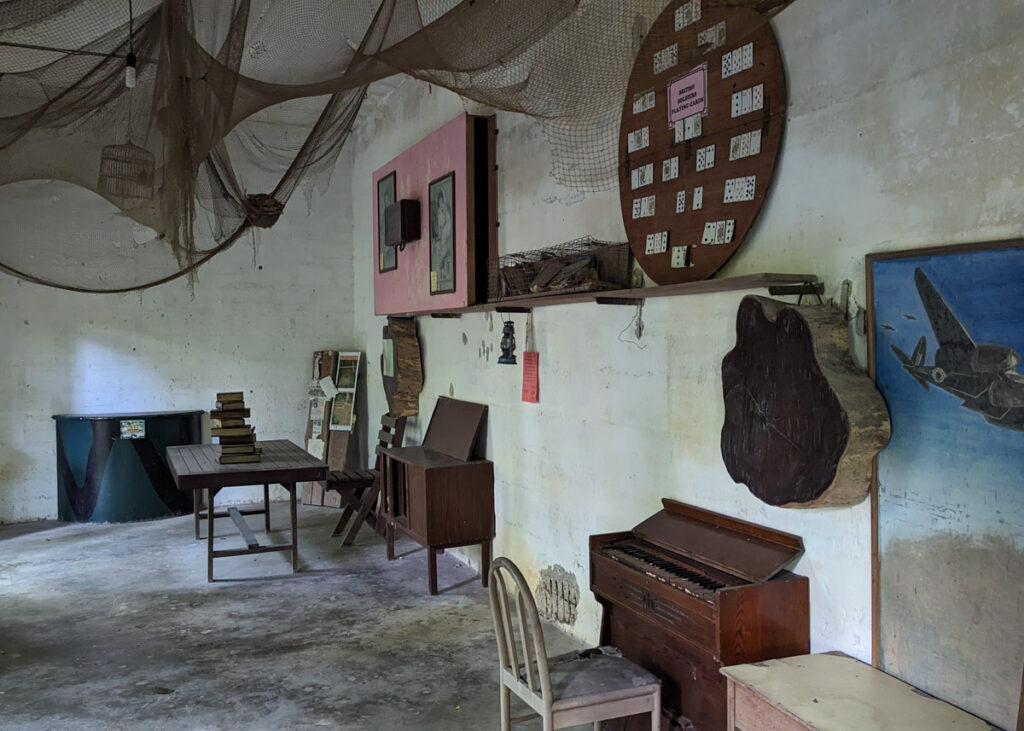
As befitting for a place which has had two distinct purposes, the museum blends details of both the British fort and Japanese POW camp. Whilst some buildings (e.g. the ammunition bays and anti-aircraft batteries) kept their original use, others (such as the barracks) took on much more sinister usages when the Japanese took over.
The museum combines both histories neatly, with plenty of information about British day-to-day life at the fort, sitting alongside graphic accounts and descriptions of the horrors of POW life here. Sometimes the tiny details are the most powerful, like bullet holes sprayed across walls, whilst next door British soldier’s playing cards are displayed on the same brick walls.

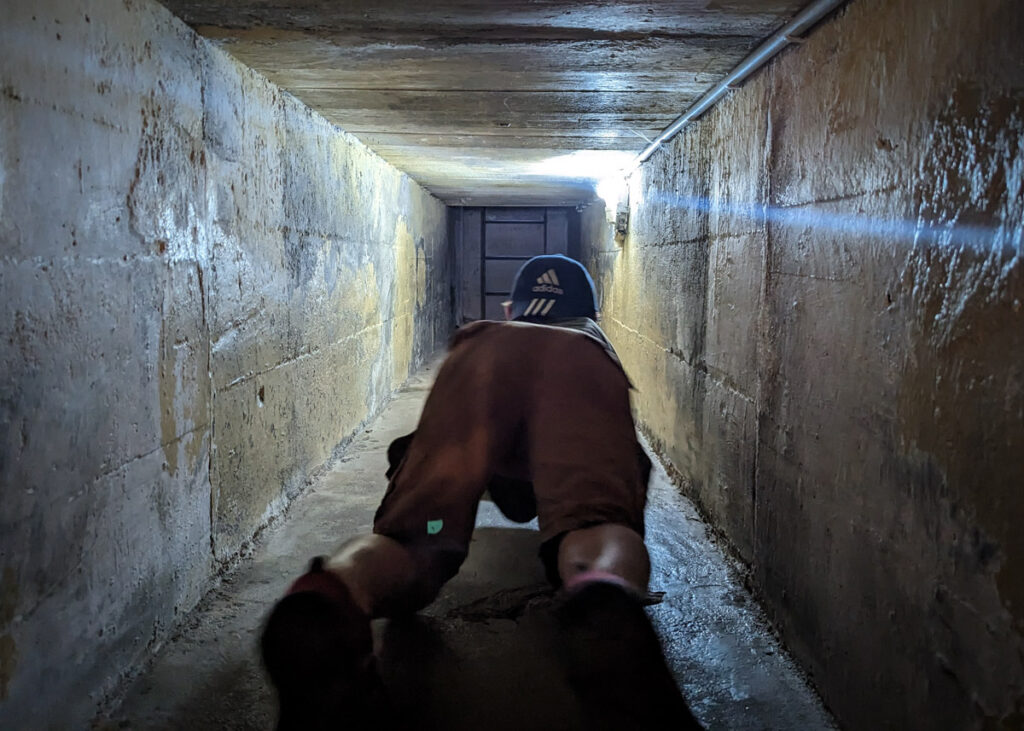
Of particular interest to children (and nimble adults) will be the escape tunnels and emergency escapes which are dotted around the site. Switch on your mobile phone torch or experience the complete darkness as you navigate along the short tunnel. The other underground rooms (with their own elaborate ventilation system in the event of a gas attack) are fascinating too, almost unchanged since they were last used eighty years ago.
Tips for visiting Penang War museum
- The museum is mainly under tree cover but it can get very hot during your visit, with some areas fully exposed to the Penang sun. Make sure you wear plenty of sunscreen.
- Mosquitos can be a major annoyance here so remember to pack some bug spray to combat them.
- Keep a very keen eye out for wild animals. There are signs displayed warning of snakes, scorpions, etc. A couple of the building have branches scattered on the floor, which would make a good home for creatures, and we (just noticed in time) a snake coiled around a metal railing, so they are around.
- Have plenty of water on you, although you can buy this at the entrance
- The site is bigger than you might expect, so pace yourselves at the beginning, try not to spend too long on the first section, as there’s plenty more to see and do
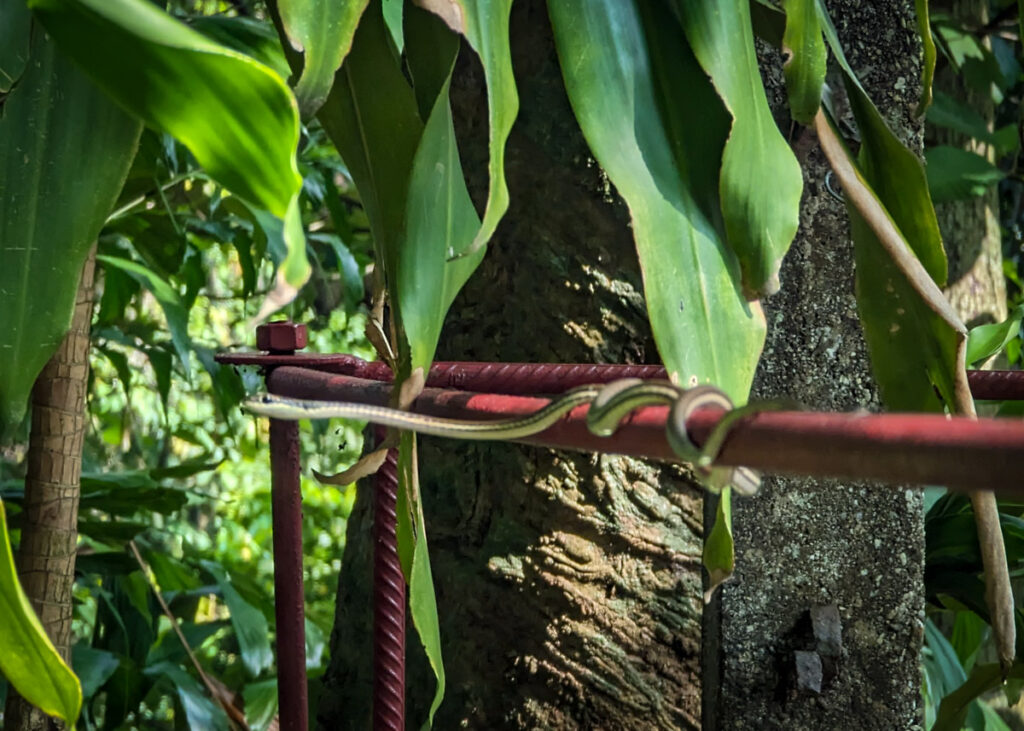
How long to spend at Penang War Museum?
We spent two hours at the museum which, due to the heat and (at times) confronting material, felt like a good length of time. If you’re especially interested in WW2 history, you could easily spend half a day here.
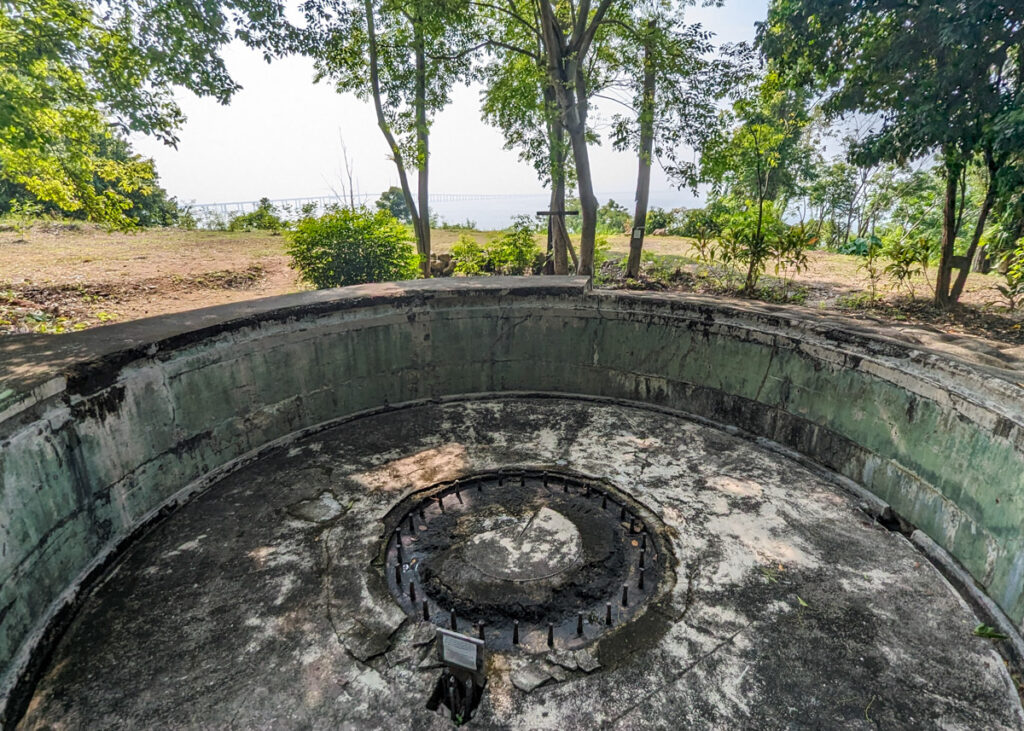
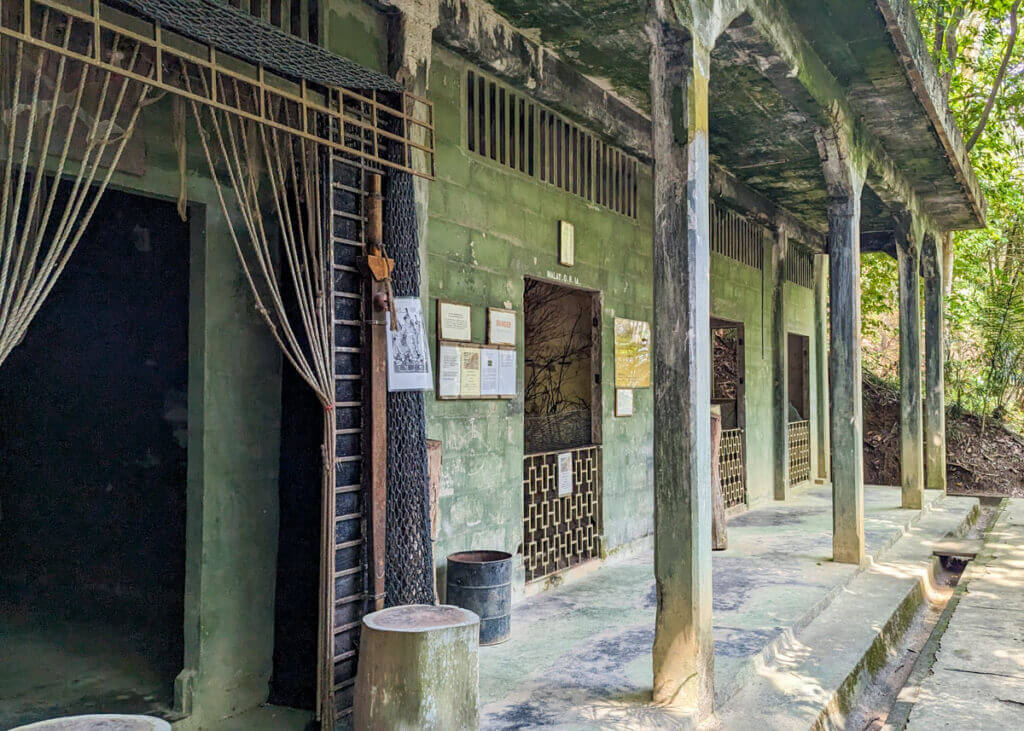
Is Penang War Museum suitable for kids?
As with everything else, the museum’s suitability for children is only something you can decide, and it depends on their age and temperament. It’s certainly not a kid-focused museum, with nothing specifically targeted at them. There are replica guns and uniforms to try, but this may not be your thing.
The horrors of the POW period are, in general, hinted at rather than explicitly referenced. There are a couple of buildings which house graphic photographs of torture and death, but these are hidden and you’ll be able to shepherd your kids past them if you prefer.
The underground rooms and tunnels are fun for kids, and there’s a tyre-swing near the gun batteries.

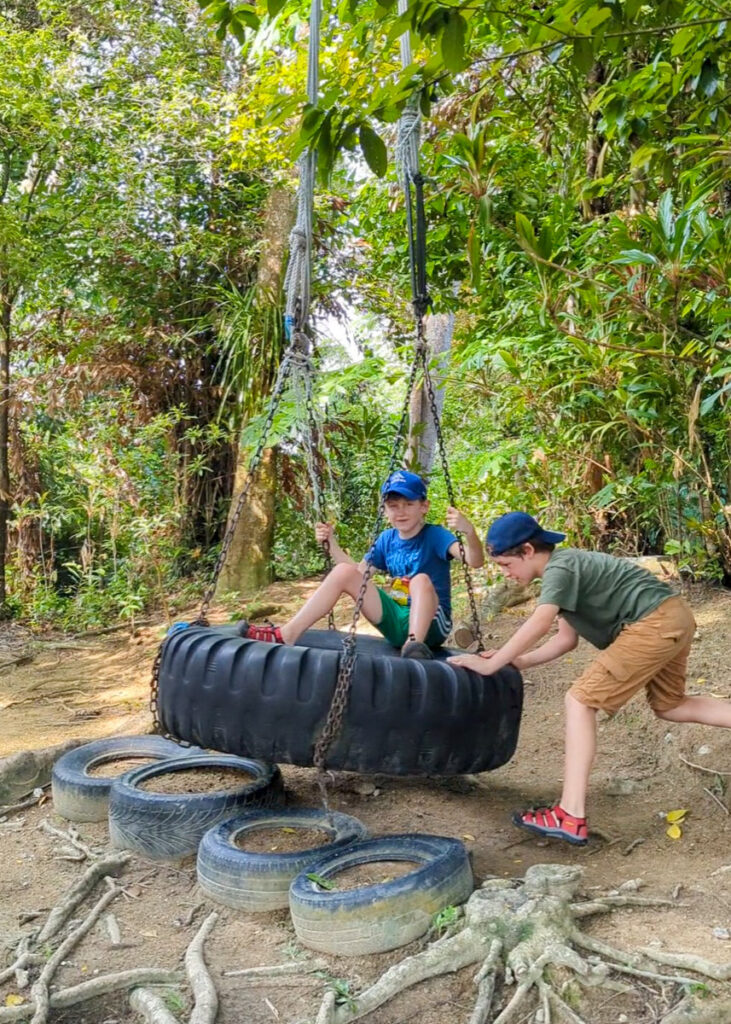
We visited with an eight and ten year-old and felt they both gained a lot from the experience, and it gave us a good chance to talk about WW2 history in Southeast Asia, a subject which is barely covered in the UK school curriculum. In that sense, the museum would make an excellent lesson if you’re worldschooling your kids.
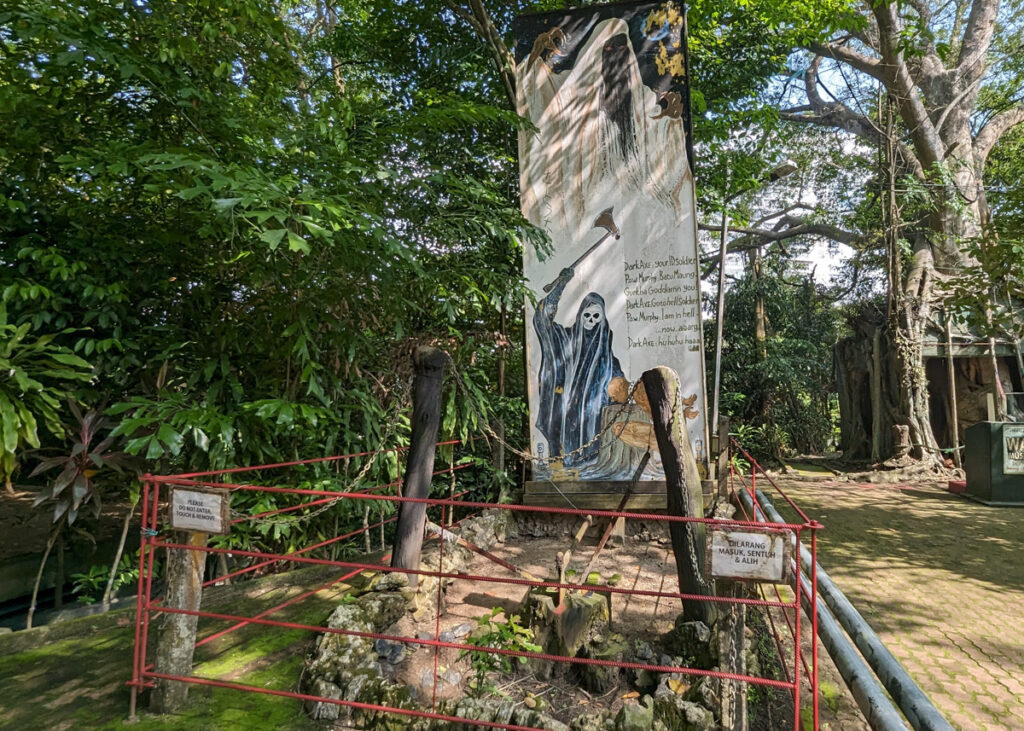
Eating at Penang War Museum
There are no snacks or meals at Penang War Museum, although the reception area does have cold drinks and packet noodles. Even back down on the main road, there isn’t anywhere to buy food and no restaurants, so you’ll need to head elsewhere to eat.
Final thoughts on Penang War Museum
The history of Penang is scarred by the events of WW2, and the Penang War Museum is a living reminder of what took place during this time. You’ll find the information boards and displays interesting, but the real highlight of any visit is simply walking around the grounds and soaking up the history.
Precious little has changed in eighty years and it has the feel of a place abandoned and left to the jungle. Small details like bullet holes in the wall and the haunting remains of a guillotine stand are reminders of the horror that took place here.
Just as interestingly, the museum brings to life the original fort, at a time when the British felt in control of their world and invincible from invasion. The museum shows how the British were looking in the wrong direction the whole time, and the catastrophic effect this would have on the population of the island who remained after the British abandoned Penang.
Even if history isn’t particularly your thing, Penang War Museum is an interesting, well-planned and informative place to visit, guaranteed to leave you with plenty to think about.
On Penang ebook
Updated for 2026, the On Penang ebook is the only travel guide you need for exploring the island of Penang. It is jam-packed with inspiration on what to do, where to eat, where to stay, and also includes a step-by-step self-guided walking tour of George Town (with photos).
This is a PDF download for use offline and on the go (and ad-free!). Save it to read on the plane to Malaysia, download to your phone to follow the self-guided walking tour, or print it off at home before you leave on your adventures and highlight all the bits you want to remember for your visit.
-
 On Penang ebook£16.95
On Penang ebook£16.95
Before your go, check out these useful reads for your visit:
The best things to do in Penang
15 BEST restaurants in Penang
Top tips for visiting Penang
One day Penang itinerary
Best hotels in Penang
How to get around Penang
A brief history of Penang


